► Maserati’s MC20 supercar in detail
► New Icona and Leggenda editions revealed
► They’re on show at Goodwood FoS 2024
Maserati’s Icona and Leggenda editions of its rather sweet MC20 supercar have been unveiled at Goodwood as the brand celebrates 20 years since it returned to motorsport.
The MC20 Icona is designed to look much like the livery seen on the MC12 Stradale – the Ferrari Enzo-based supercar that propelled Maserati back into supercar-dom in the mid-2000s. The MC20 Icona model features an Bianco Audace Matte and Blu Stradale livery with chromed wheels and blue brake calipers.

With the Leggenda edition, this particular model of MC20 is finished in the same colours as the Vitaphone Racing MC12 GT1 – the race car that won multiple 24 Hours of Spa events.
Both models feature monocoque racing seats upholstered in colours that match their exterior, and they both come with a plaque to note that they’re just one of 20 of each build. Other bits of equipment on these models include an electronic limited-slip diff, carbonfibre interior trimmings and more.

Maserati MC20: Notte edition
These editions come after Maserati launched its first MC20 edition: the Notte. That means ‘night’ in Italian – so it’s rather unsurprising that the car’s completely murdered out with matte black paint, black 20-inch alloys, black brakes and black interior upholstery. Production is limited to just 50 units worldwide.
Apart from the stealth fighter paint job, though, the Notte is identical to the standard MC20. That means it’s powered by the company’s twin-turbocharged 3.0-litre Nettuno V6 engine, which churns out 621bhp and 538lb ft of torque. That’s enough for a 0–62mph time of 2.9 seconds and a top speed of 202mph. If Batman had need for a supercar, we reckon this would be high on his list.
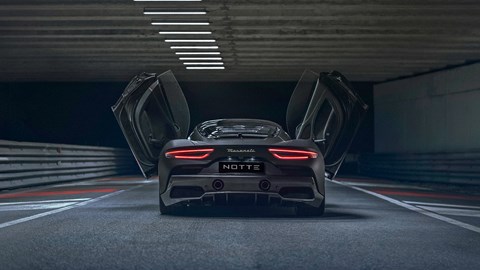
The Notte follows on from the MC20 Cielo. It’s a convertible version of the supercar that was unveiled in the middle of 2022 – and for all those that haven’t been keeping on top of their Duolingo lessons, its name means ‘sky’ in Italian. And it isn’t just pretty. It’s clever, too.
Its glass roof can be retracted in just 12 seconds at speeds of up to 25mph and it features fancy ‘polymer-dispersed liquid crystal’ technology that allows the panel to turn opaque at the touch of a button, much like Porsche’s Variable Light Control available on the Taycan. You pay a 65kg weight penalty for the convertible roof but, crucially, Maserati says interior storage remains unchanged.
Maserati MC20: the CAR lowdown
Maserati has been quite busy of late, building up a portfolio of sensible saloons and SUVs to entice the masses into PCP deals. But if it wants to flog its finance deals successfully, it needs a good advertising strategy. So, what’s the best course of action? That’s right – a bonkers, beautiful and completely bitchin’ flagship supercar designed specifically to get up Ferrari’s nose.
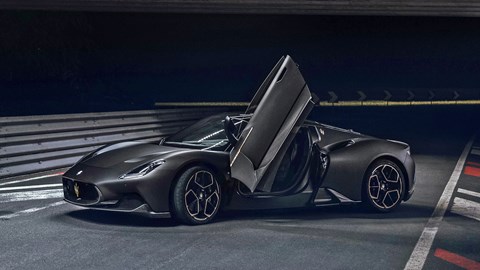
As flagships go, the MC20 ticks all the boxes and then some. When Maserati launched the car, it said it was its time to be audacious and that sounds about right to us. After all, a return to the supercar market after a 16-year break with a carbon fibre-tubbed, £180,000+ coupe/convertible and a Maserati-derived V6 or electric powertrain and diagonal doors does smack of audacity.
The truth is Maserati needs to be audacious to step out of Ferrari’s shadow. Behind the amazing figures and surprise powertrains, the MC20 is more than a halo car. It’s a rebirth for the brand.
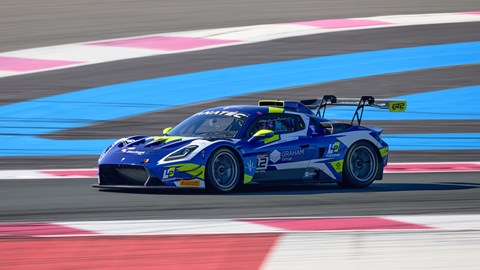
It spells a surprise return to motorsport for Maserati. The MC in the supercar’s stands for Maserati Corse (or ‘Maserati Racing’ in English) – and the brand unveiled a race-prepped version of the car in the final round of the 2023 Fanatec GT2 European Racing Series, where it fought through the pack to claim a spot on the podium. Maserati is now preparing the car to compete in the entire 2024 series.
What about the electric model?
Maserati hasn’t confirmed much about it yet, probably because it isn’t due to go on sale until 2024. We know it’ll be called the MC20 Folgore (which means ‘lightning’ in Italian) and we suspect it use similar electric technology found in the Maserati GranTurismo Folgore.
That car features a 92.5kWh battery pack and three electric motors pumping out a whopping 751bhp. If the motors find their way into the MC20’s super lightweight carbon fibre chassis, that’ll be a recipe for some serious speed. The battery might be a little too large for the MC20’s dainty frame, but we’re still expecting a maximum range of between 230 and 250 miles.
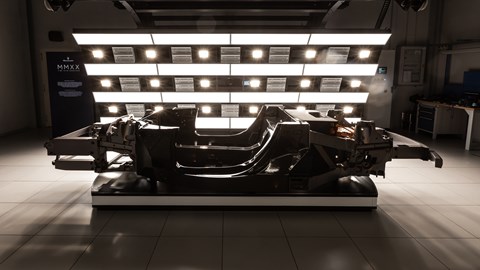
Maserati has told us that the switch to electric power won’t dramatically affect the MC20’s styling, either. Back in 2020, the company teased us with some images of the supercar’s naked tub with some electrical gubbins in the rear – and it doesn’t look like the company’s engineers had to make merry with the angle grinder and the gaffer tape to make it fit. Plus, because Maserati is so desperately Italian, it even managed to make the EV bits look quite pretty.
What about the design?
Well, the most astute readers will notice the MC20 doesn’t have a huge wing jutting out of its rear end, which might seem like a brave decision considering the driver has 621bhp under foot. Maserati ditched a massive rear wing for a much smaller spoiler that apparently enhances the up-washing generated by the floor, while increasing the downforce. The firm’s boffins spent over two-thousand hours in Dallara’s wind tunnel to arrive at that point. So, just trust that it works, okay?
All those man-hours have paid off, though – the lack of a massive chav wing has kept the MC20’s styling pure. It looks stunning in the metal, partly because it isn’t entirely obvious how Maserati has tried to prevent it from killing its occupants the first time the car approaches a corner.
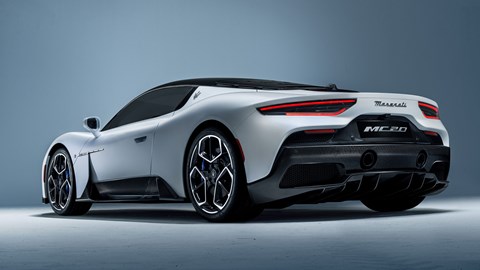
It’s obvious once you wrap your head around the car’s colour scheme, though. It’s split into two sections – a painted section on the top and a naked carbon fibre bit at the bottom. The top of the car’s all about form, while everything below the wheel nuts is pure function.
There’s a plethora of air intakes and ducts hiding in the panelling, all of which are designed to channel air under the car and suck it into the tarmac. And just look at the state of that rear diffuser. It looks like it could create enough downforce to keep a Typhon fighter jet fixed to the tarmac.
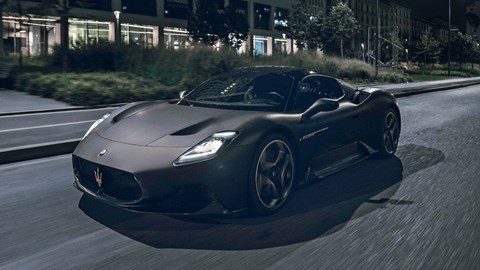
It’s almost practical too. Behind the seats, there’s enough room for two aircraft cabin bags – and you get two boots! There are 47 litres of space hiding under the bonnet and further 101 litres lurking in the luggage compartment behind the engine.
Is the interior as future-gazing?
The MC20’s cabin is as thoroughly modern as the rest of the car. Maserati describes it as essential, functional and rational, which we think is fair enough. It looks purposeful, but it doesn’t feel stingy.
You get carbon fibre seats and a thick steering wheel developed by Maserati test driver and former MC 12 racer, Andrea Bertolini. The wheel only has the essentials (for a supercar, at least). That means only basic volume and phone controls, along with a start and launch control button.
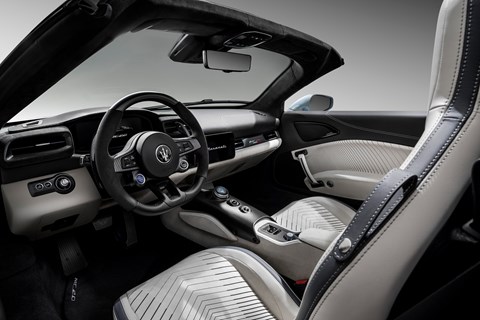
The rear-view mirror is rather odd, too. It works and looks like a normal rear-view mirror but, because the view out of the back is so restricted, it’s connected to a camera mounted at the rear of the car and can also display a digital image of the traffic behind you.
On the centre console, there’s a rotary drive mode switch that’s styled like a watch, which we assume this was designed to appeal to influencers’ magpie-like attraction towards to shiny things. Through this, drivers can toggle traction control, throttle, gearshift, and turbo boost maps in four different driving modes. We’ve outlined them below.
GT (default)
Engine boost: normal
Pedal sensitivity: normal
Active exhaust valve: open above 5,000rpm
Gear shift: slow and smooth
Suspension: soft
T/C: normal
Wet
Engine boost: limited
Pedal sensitivity: normal
Active exhaust valve: open above 5,000rpm
Gear shift: slow and smooth
Suspension: soft
T/C: all controls on
Sport
Engine boost: normal
Pedal sensitivity: low resistance, high sensitivity
Active exhaust valve: open above 3,500rpm
Gear shift: fast and direct
Suspension: stiff
T/C: some controls deactivated
Corsa
Engine boost: maximum
Pedal sensitivity: low resistance, extremely sensitivity
Active exhaust valve: always open
Gear shift: racing
Suspension: racing
T/C: racing, with launch control available to use via steering wheel
ESC off
Everything off. Basically Corsa but with traction control completely deactivated.
Infotainment
Sadly, we can’t even write about a supercar in 2023 without mentioning its infotainment system.
Despite its minimalist interior, the MC20 features a 10.25-inch infotainment screen with a Wi-Fi hotspot. Maserati’s phone app can also keep you updated on the car’s fuel and oil levels, as well as tyre pressures and the usual array of tracking features.
It works with Google and Alexa smart speakers, too, making it perfect for the sort of adenoidal supercar driver who likes to bark facts about their car to anyone they’re entertaining.
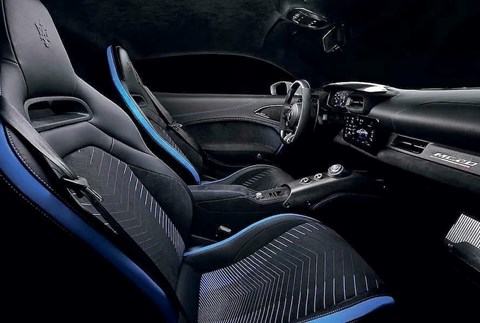
But what’ll really excite the anally retentive types is that Maserati will send owners a monthly email report detailing information about the condition of the car’s engine, brakes and suspension.
Lastly, Maserati has hit another first with the MC 20. It was the first car equipped with a premium-sound system from Italian firm Sonus. We’re struggling to see the point, though. Call us crazy, but we’d much rather listen the to the engine’s pistons battering squashed dinosaurs.